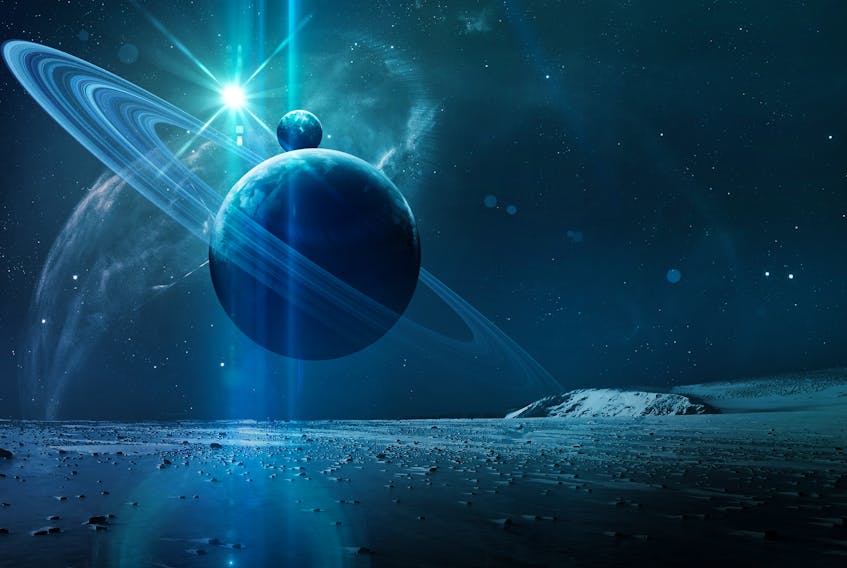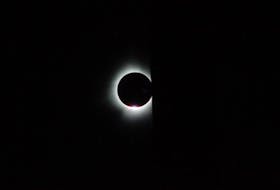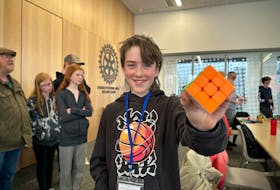Mercury and Mars are still visible for a brief time just after sunset during the last week of June before disappearing from view by mid-July.
Mercury (mag. +1.1), having just passed its point of greatest eastern elongation from the sun on June 23, is still relatively high in the west-northwest sky about 1 hour after sunset. Mars (mag. +1.9), after its conjunction with Mercury on June 19, sits just to Mercury's lower right. As the glow of the sunset fades and the western sky begins to darken, use binoculars to scan the horizon near the point where the sun set. You will have only a brief time (less than an hour) to find the planets before they follow the sun below the horizon.
The two bright stars to the upper right of Mercury (almost in line with it) are Pollux (left) and Castor (right), the two bright name stars in the constellation of Gemini - the twins.
Here are two lunar challenges. The first will be to try to spot the extremely thin crescent of the waning moon in the northeast sky just before sunrise of July 1. Our "morning star" Venus (mag. -3.9) sits just to the lower left of the crescent moon. Venus disappears into the glow of the rising sun later this month, not returning to our evening sky until September. There will be a total solar eclipse in the southern hemisphere on July 2, which we, unfortunately, will miss.
Events:
- July 2 - New moon
- July 4 - Earth at aphelion (furthest from sun)
- July 5 - Moon at perigee (closest to Earth)
- July 9 - First quarter moon
The second challenge will be to spot the thin crescent of the waxing moon in the western sky about 30 minutes after sunset on July 3. The thin sliver of the crescent moon (one day past the eclipse) will be very pale and low to the horizon, so you will definitely need binoculars. Mars may be visible to the upper left of the moon, with Mercury further to the left.
Saturn (mag. +0.1) reaches opposition (opposite the sun in the night sky as viewed from Earth) on July 9. The planet and its magnificent ring system will be visible all night in the southern sky to the upper left of the Teapot asterism in the constellation of Sagittarius - the archer.
Jupiter, our solar system's largest planet, reached opposition on June 10. It still shines brightly at mag. -2.6. This majestic planet and its four Galilean moons - Io, Europa, Callisto and Ganymede - is visible in the south-southwest just after sunset before setting in the pre-dawn sky.
Earth reaches aphelion on July 4, its furthest point (152,104,285 kilometres) from the sun in our planet's annual orbit around the sun. Though we are around 11 million kms further from the sun at that time than we are in January, the northern hemisphere is, thankfully, tilted directly towards the sun, resulting in our summer season and the corresponding warmer weather.
So, get out there and enjoy your summer.
Until next time, clear skies.
Glenn K. Roberts lives in Stratford, P.E.I., and has been an avid amateur astronomer since he was a small child. His column, Atlantic Skies, appears every two weeks. He welcomes comments from readers, and anyone who would like to do so is encouraged to email him at [email protected].
- Read Glenn Roberts' June 12 column: ATLANTIC SKIES: Searching for the Summer Triangle









